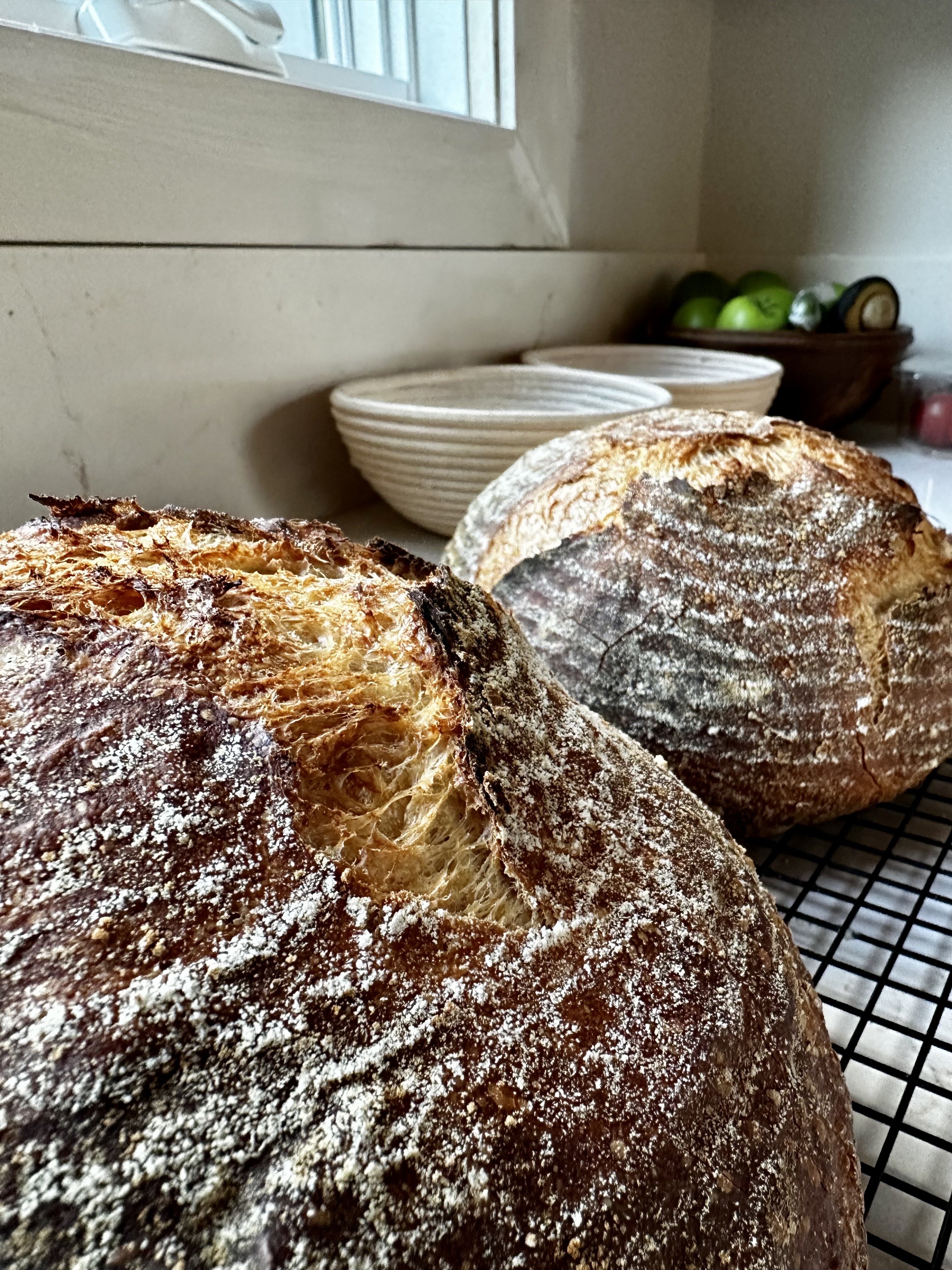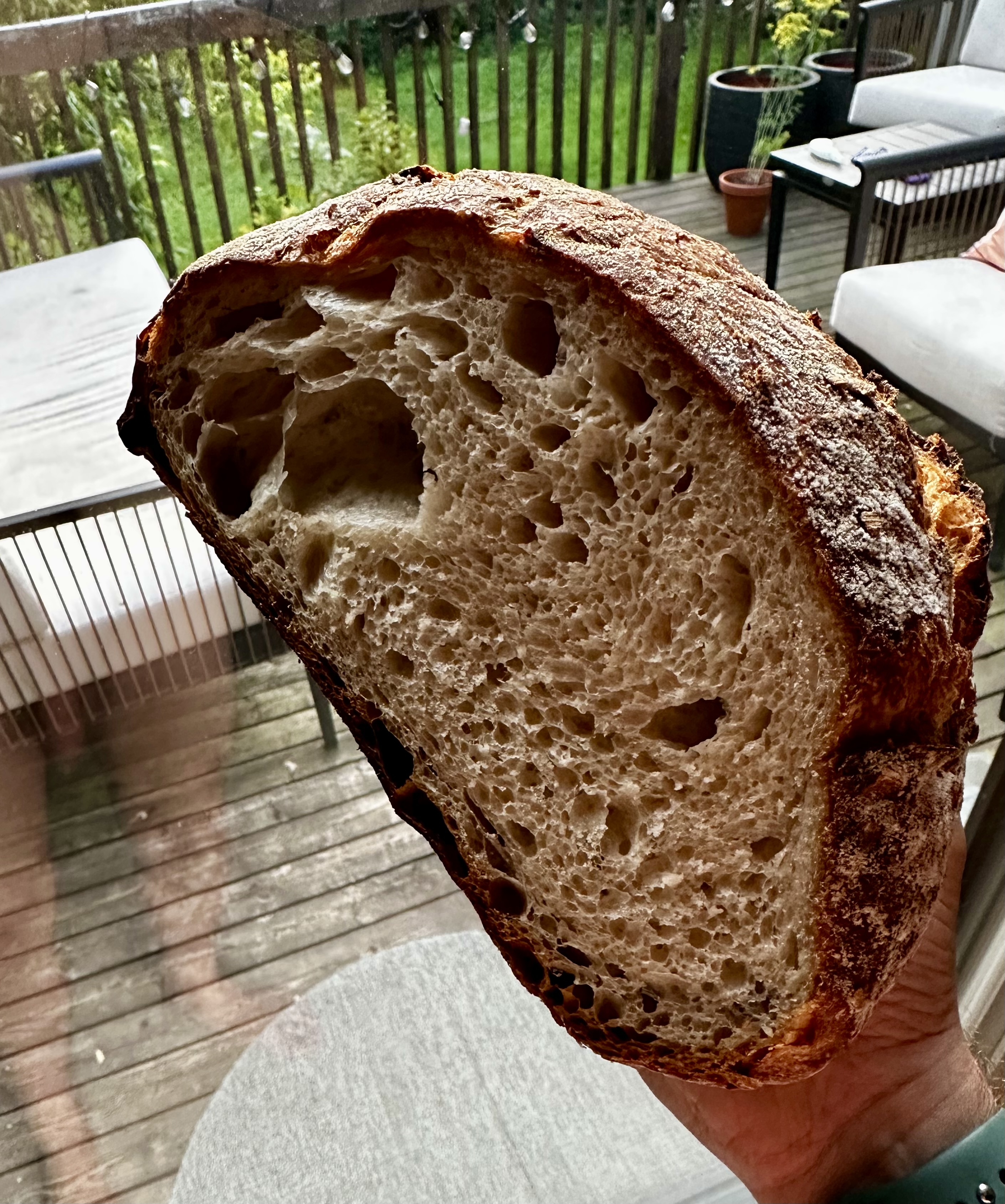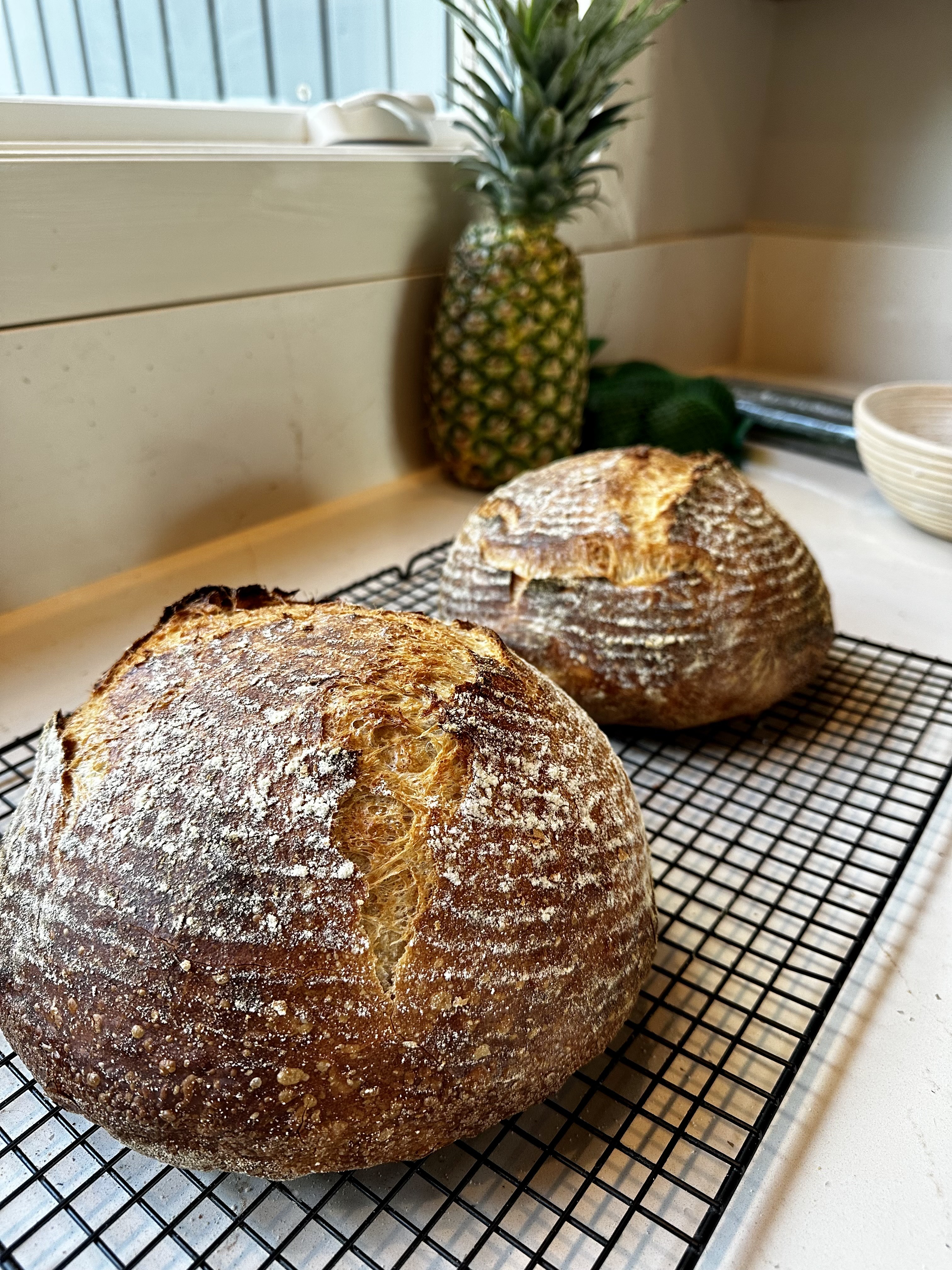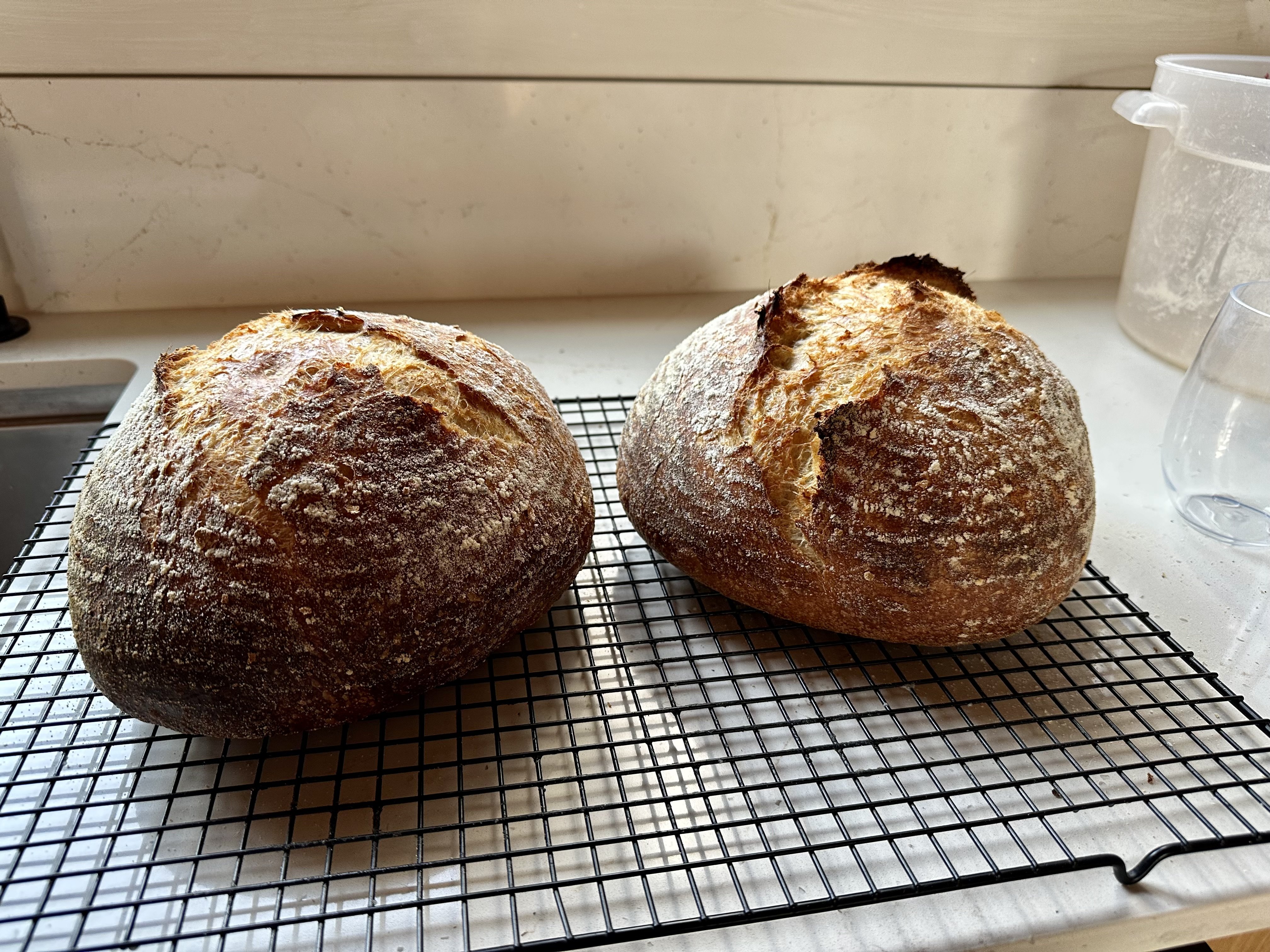I had a couple people ask for my recipe/process. I find this to be pretty chill and not too much active time. Another nice thing is that there is no leftover starter to either throw out or find another use for. The end ratios for this are ~80% hydration.
What you need:
- Big mixing bowl
- 2 bannetons
- Dutch oven (preferably 2)
- Medium Mason jar
- Small mixing bowl (1L)
- Scale
Ingredients:
- Bread flour (I use King Arthur)
- Any kind of whole flour
- Rice flour
- Salt
- Water
Process
This is my sample schedule I follow when making bread.
Bootstrapping into the process
I keep about 180g of starter in the fridge in the medium mason jar. If you already have a starter, just use 180g in the next step and add a spoonful extra to the mason jar to jump start the next cycle.
If you don’t have a starter yet I recommend following https://www.kingarthurbaking.com/recipes/sourdough-starter-recipe
7pm the day before
- Empty the mason jar of starter into the 1L mixing bowl. Do not clean the jar out completely, make sure to leave a small amount of starter in the jar
- To the mason jar (you just emptied) add 90g room temp water and 90g bread flour. Mix together and place (don’t tighten) the lid on top.
- To the 1L bowl add 150g room temp water and 160g bread flour. Mix together and loosely cover the bowl with some sort of cover
- Leave both out on the counter overnight
Current State:
- Mason jar has about 180g of what will become our next starter
- 1L bowl has about 400g of starter that will be used in the bread
6am the next day (could be later)
- In the big mixing bowl add 100g of whatever whole flour you like (could also be rye, spelt, etc), 700g of bread flour, and 600g of warm-ish water
- Mix together until no dry flour is left. Cover and let sit on the counter
7am
- Put the mason jar in the fridge (for next time). My starter has been good for up to 2 weeks between bakes.
- Add the entire starter mixture from the 1L bowl into the big bowl
- Measure and add 18g of salt tho the big bowl
- Mix to combine and knead the dough (in the bowl)
- If you find the dough kinda “breaks” (like when you make a sauce with eggs) or gets really sticky walk away for 2 minutes and come back, it will be much more workable
- Continue kneading in the bowl for 5-10 minutes until everything is well incorporated and feels like it has some strength
- Coil folds
- I like to do coil folds
- You grab the dough from both sides in the middle and lift
- As you lower down you want to get one of the hanging sides under the other, to make the dough into a coil
- Rotate 90 and repeat
- This should leave you with a nice tight ball
- Do your first coil fold and cover the dough
Next hour or two
- As you see the dough spread out in the bucket to touch the sides, do a coil fold
- Be progressively more gentle as time goes on
2pm
- Flour your counter lightly
- Put a little flour on the dough on the side you are planning to tip out on
- Ease the dough out onto the counter
- Prep your bannetons with a light dusting of rice flour
- Divide the dough into 2 equal pieces (eyeballing is fine)
- Shape your dough to fit into your banneton
- I have round ones so I
- Get the dough into a rectangle
- Fold both long sides over the middle (one on top of the other)
- Roll up the resulting long rectangle to make a tight coil
- Drag the coil towards me and rotate to firm up into a ball
- I don’t score my loaves so I place in the banneton seam side down. If you are scoring place them seam side up
- Repeat for the other loaf
- Lightly flour the tops (use the leftover bench flour)
- Cover gently (I use a kitchen garbage bag) and leave on the counter
Note
If you want you can also pivot here to baking the next day. Leave the loaves out for about 20 minutes and then place (covered) in the fridge overnight and then bake the next morning. Leave them in the fridge until you are ready to put them in the hot dutch oven(s)
4pm
- Put your dutch oven(s) in the oven and preheat to 450
5pm
- Carefully take your dutch oven out of the oven and tip one of the loaves in. Immediately place the lid back on and return the dutch oven to the oven
- Repeat if you have a second dutch oven. If you only have one, put the other loaf in the fridge while the first bakes.
- Bake in the oven for 30 minutes
- Carefully open the oven and remove the lid of the dutch oven(s)
- Bake for another 15-20 minutes until you have the colour you like
- Tip the loaves onto a cooling rack
- Wait until cool and enjoy
Enjoy!
Let me know if you have any questions or if any steps weren’t super clear :D Hopefully, this is as successful for folks as it has been for me.
Post pics!!!!







Exactly this. Technical literacy in zoomers and Gen next is going to be worse than boomers.
Everything is fast and all the details of the technology are hidden from them
That being said I'm sure they will use technology in mind blowing ways. But have not idea how it works.